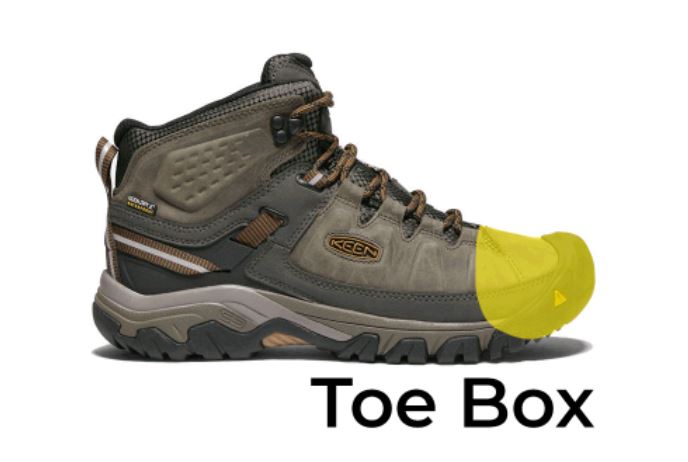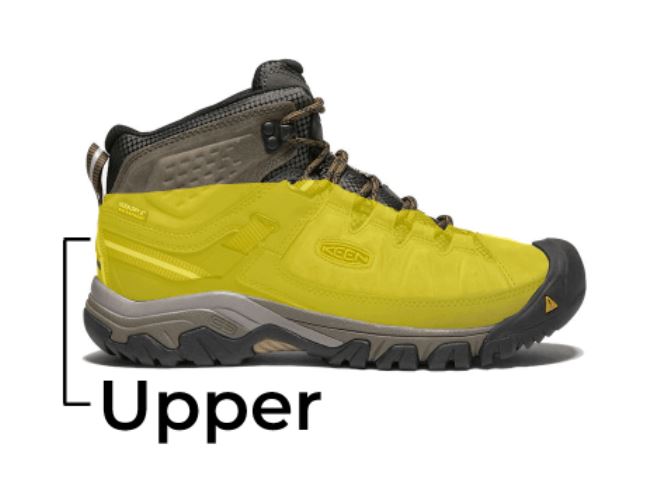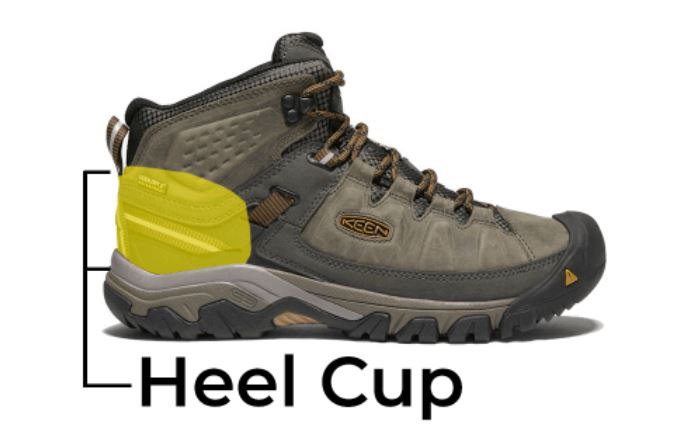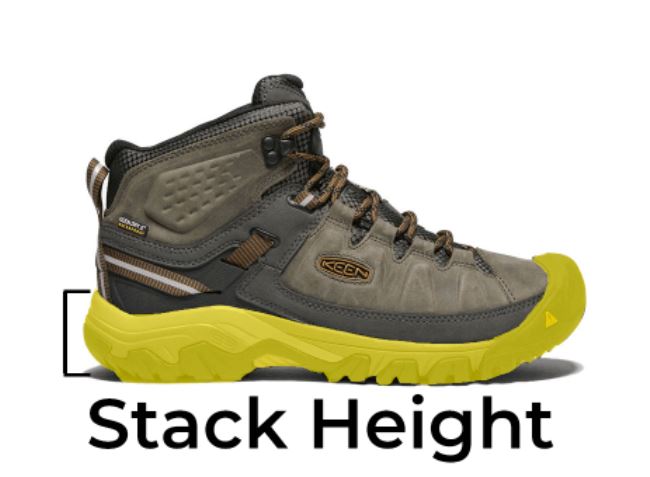What makes an outdoor shoe?
A two-part guide on how to pick outdoor shoes.
Part One
When looking for new shoes, there are a lot of factors to consider. Outdoor shoes are easy to pick with this guide. And there’s a simple process to finding the best pair of hiking shoes. So follow along and use this guide to ensure you get the right pair of hiking shoes to enjoy your time outdoors.
To figure out what shoes are best for you, start by understanding your feet’s needs. This process is simple. First, you need to figure out your shoe size. It varies based on the manufacturer and the style. Check out some size guides from our top brands like On, Hoka, and Altra. The easiest way to get your shoe size is to stop by one of our store locations. There, you can get your size taken using a Brannock Device. This measures the length and width of your foot and identifies flat feet or arch problems. You can also measure your foot size at home following these simple steps.
The next piece is understanding your foot’s needs. Feet are a complex body part and shoes can make or break your time outdoors. We’ve broken down some basic considerations below and what factors to consider with each shoe component when shopping for your next pair of shoes.
Pronation vs supination
- Pronation is the natural motion as your foot rolls from heel to toe while running or walking. While it is often seen as a bad thing, it’s normal for your foot to pronate a little bit. Overpronation is the real problem. Overpronation occurs when your foot overcorrects for this rolling motion and flattens your arch. This puts too much pressure on your arch, heel, and toes leading to issues with your foot and ankle. Overpronation is best solved with supportive and cushioned shoes. Some of the best options for overpronators are Hoka, Keen, and Altra.
- Supination is the opposite of pronation. Supination occurs when your foot rolls too far outward. This causes extra pressure on your heel, toes, and ankles. It’s especially dangerous as your body distributes too much weight over the thinnest part of your foot. Supination is best treated with supportive shoes, like Overpronation. Check out support options from Keen, Salomon, and On.
Stability vs neutral
Shoes are often classified as either stable or neutral.
- Stability shoes include extra support on the inside of the shoe to accommodate overpronation.
- A neutral shoe is more balanced and features an even amount of support spread over the entire sole. Thanks to the more firm foam, neutral shoes are often better for those who want a fast and light option.
Always try on to find your perfect fit by following these steps:
- First, shop for shoes when it’s warmer out and at the end of the day. That way you can account for foot-swelling and get the best size. This also lets you test how breathable the shoe is.
- Next, when you put them on but before you lace them up, knock the heel against a surface to set your foot as far back in the shoe as possible.
- Then, lace them up. When lacing boots, be sure to avoid over-tightening them on hot spots. If your toes are in pain after a hike, try a looser lacing around the toebox. If you often feel numbness in your feet, try a lacing pattern that doesn’t cross over the top of your foot.
- Finally, walk in them a lot. Walk on inclines and loose surfaces if possible, and up and down a hill.
If you aren’t able to shop for shoes in person, try getting something from a brand you’ve worn before. Shoe manufacturers use the same “last”, the wooden foot model that the shoe is constructed on. That lets you order with more confidence since you’re used to the fit.
When you start shopping for shoes you may find a lot of confusing information. Shoes are simple. The average pair of outdoor or trail running shoes feature these key parts:
Upper
The upper of a shoe is key to preventing pain and maximizing comfort. With a padded mesh construction, most outdoor shoes lock onto your foot from the heel. This keeps the midsole in place while ensuring your feet can wick moisture.
Key terms:
- One-piece liner:
A liner is a part of the shoe that lines the inside so the shoe fits your foot as one piece. - Collar:
A shoe collar is a rigid piece at the top of the heel and around the top of the laces. The collar ensures the shoe holds its shape after you tie the laces. It also makes the shoe easy to put on. Some collars are a flexible knit material, while others are rigid foam blends.

- Toe box:
The toe box is the upper section where your toes sit. Often, the toe box is the first part of your shoe to wear out due to constant friction from your pinky and big toes. Shoes with a wider toe box, such as Altra’s, will help if you have this issue.

- Upper:
An upper features a combination of polyester mesh and other materials to create a padded, breathable structure. Mesh is preferable for day hiking and running thanks to its breathability and comparable support.
- Heel cup:
The heel cup is the back part of the midsole. It’s a critical part of the shoe. The heel cup keeps your shoe from slipping down at the back and maintains the structure of the shoe as you walk. Heel cups use a firm plastic that curves around the back of your foot to provide rigidity. The most important factor with heel cups is to ensure your shoes fit and feel good on long hikes.

Waterproofing
Waterproof hiking boots come in three main options. These include waterproof membranes, a chemical treatment, or a water-resistant shell. These range from how water-resistant they are and how breathable they are. The more breathable a waterproof treatment is, the less waterproof it usually is. We’ve summarized these options below. Check out the descriptions below to ensure you pick the best waterproofing option for you!
- DWR:
Durable water-resistant chemical treatment is the standard waterproofing option. DWR is a moisture-wicking chemical layer that coats porous fibers. This prevents them from absorbing water but is small enough to not block airflow. Oftentimes a DWR isn’t considered a “fully waterproof” option since you can’t submerge the boots. The DWR option is great for day hiking shoes that might only handle a bit of ambient moisture from mud and rain. - Waterproof membrane:
A membrane is overlapping layers of mesh and polyester. The top layer is often a waterproof layer with tiny holes, smaller than a water molecule, that let the shoe breathe. The inner layers provide a cushion and space for moisture to flow off your skin. The membrane is best for thru-hiking and camping on the trail, as the waterproofing keeps your feet dry. This option isn’t as breathable, so get moisture-wicking hiking socks like Smartwool or Swiftwick. Most use either Gore-Tex or their own
- Water-proof shell:
A shell is the most water-proof option. A shell is a fully waterproof outer without a “membrane”. Shell options are made for technical needs like mountaineering or similar terrains. A shell option is best for navigating snow. There are some hybrid shell options, like Sorel Duck Boot. These have a breathable leather upper with a full rubber toe cap and outer.
Midsole
The midsole of your shoe creates stability and support. Modern shoes utilize a blend of plush EVA foam with a sturdy TPU foam inside for support and structure.
Key terms:
- EVA Midsole
EVA is a type of foam found in shoes. These midsoles are popular thanks to their responsive and comfortable foot feel. It’s also very durable and maintains its support for a long time. It’s rare to find outdoors shoes made without EVA foam, but pay attention to a “TPU” foam as well. TPU is a denser foam that provides more support for more technical options. TPU is often found in approach shoes, mountaineering boots, and trail runners.

- Stack Height
The stack height is the height of the actual sole, from the bottom to the insole where your foot sits in the shoe. This measurement lets you know how bulky the outsole is.

- Shank:
A shank is a rigid piece of plastic that runs the length of the outsole. It provides structure and keeps the shoe rigid through the stepping motion. Then, the shank flexes and provides the “bounce” as you roll your foot forward.
Outsole
The outsole provides the necessary grip and structure to move you forward. Some shoes use a proprietary outsole called Missiongrip™. Missiongrip™ features a special diamond shape and rubber compound. When looking for trail shoes, the sole only makes a difference if you’re running versus hiking. Trail-running shoes need an aggressive tread, with deep, grippy channels and lugs. Hiking shoes need a wider, stable forefoot with grippy heels.
Key terms:
- Drop:
A shoe’s drop is the distance from the highest part of the outsole down to the lowest part. It measures how much curve there is in the shoe’s sole. This helps you figure out if the shoe is a good fit for your foot. While the average shoe has a 6mm drop, like Hoka or On, some have an 8-10mm drop like The North Face. Other brands like Altra are famous for having a 0mm drop and can be a good option for flat-footed hikers.

- Missiongrip™/rubberized outsole:
Some shoes use a proprietary rubber blend for their outsoles. The Missiongrip™ outsole technology from On Running specifically use a diamond-shaped tread with a super-sticky rubber for long-lasting performance. Other outsoles use specially formulated rubber to maintain grip.
Now that you’re familiar with the components of outdoors shoes, you can shop with confidence. Check out part two of our outdoor footwear guide, launching Thursday April 21, 2022, for an explanation of different outdoor shoe styles and which one is best for you!